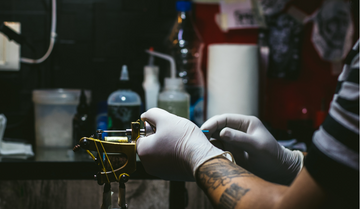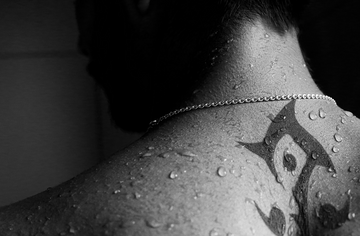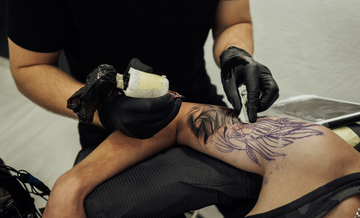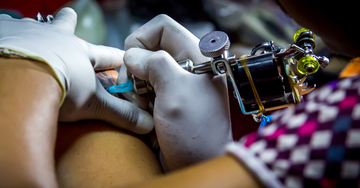When you get a fresh tattoo, the aftercare process becomes your top priority. Tattoos are essentially open wounds that require special attention to heal properly and maintain their vibrant appearance. But when swelling, redness, or discomfort kicks in, you might wonder: can you put ice on a new tattoo? Let’s dive deep into this intriguing question and explore everything you need to know.
Understanding the Importance of Tattoo Aftercare
Why Proper Aftercare Matters
Getting inked is more than an artistic statement—it’s a medical procedure that punctures your skin repeatedly with needles. Proper aftercare helps:
- Minimize infection risks.
- Speed up the healing process.
- Preserve the quality and detail of the tattoo.
Ignoring aftercare could lead to scarring, discoloration, or even loss of design clarity. Think of aftercare as a roadmap to keeping your tattoo as stunning as the day you got it.
The Healing Process of a New Tattoo
Tattoo healing is a multi-stage process:
- Initial Inflammation (Days 1–3): Redness, swelling, and oozing are common.
- Scabbing and Itching (Days 4–14): Your skin starts to repair itself.
- Final Healing (Weeks 3–6): The tattoo settles and reveals its final appearance.
Swelling is a natural part of healing, especially in areas like ankles or wrists. This is where ice might come into play.
How Ice Affects a Fresh Tattoo
Benefits of Using Ice on a New Tattoo
Ice can be incredibly soothing when applied correctly. Here's how it helps:
- Reduces Swelling: Ice constricts blood vessels, reducing inflammation.
- Eases Pain: The numbing effect of ice can alleviate discomfort.
- Soothes Itching: Cooling the area can calm the irritating itch of a healing tattoo.
Potential Risks of Applying Ice Directly
While ice offers benefits, applying it directly to your tattoo can cause problems:
- Frostbite Risk: Prolonged exposure can damage sensitive skin.
- Moisture Issues: Ice melting onto your tattoo introduces excess moisture, increasing infection risk.
- Delayed Healing: Extreme cold might slow down the body’s natural healing process.
Always balance the benefits and risks to ensure you’re helping, not harming, your tattoo.
Best Practices for Cooling a New Tattoo
Safe Cooling Methods You Should Try
To safely cool a fresh tattoo:
- Wrap an ice pack or a bag of frozen peas in a clean, soft towel.
- Gently place it on the tattooed area for 10–15 minutes.
- Allow the skin to rest between sessions to avoid overcooling.
You can also use a cold compress soaked in clean, cold water for a similar effect without the direct risks of ice.
What to Avoid When Using Ice
- Avoid Direct Contact: Never put ice directly on the tattooed skin.
- Skip Chemical Gel Packs: Some cold packs contain substances that could leak and irritate the tattoo.
- Don’t Overdo It: Too much cold exposure can hinder healing rather than help.
Additional Tips for Tattoo Aftercare
Keeping the Area Clean and Hydrated
Tattoo aftercare is a full-time job in the early stages. Use fragrance-free, antibacterial soap to clean the area gently. Apply a thin layer of a recommended tattoo ointment to keep the skin moisturized and protected.
Recognizing Signs of Complications
It’s crucial to know when to seek medical advice. Watch out for:
- Persistent redness or swelling after several days.
- Yellow or green discharge (signs of infection).
- Extreme pain or a fever.
Catching complications early ensures they don’t escalate into serious problems.
Taking care of a new tattoo requires patience and the right approach. Cooling it safely with ice can bring relief, but only when done correctly. Always prioritize your tattoo’s health and don’t hesitate to consult your tattoo artist or a medical professional if you’re unsure.





